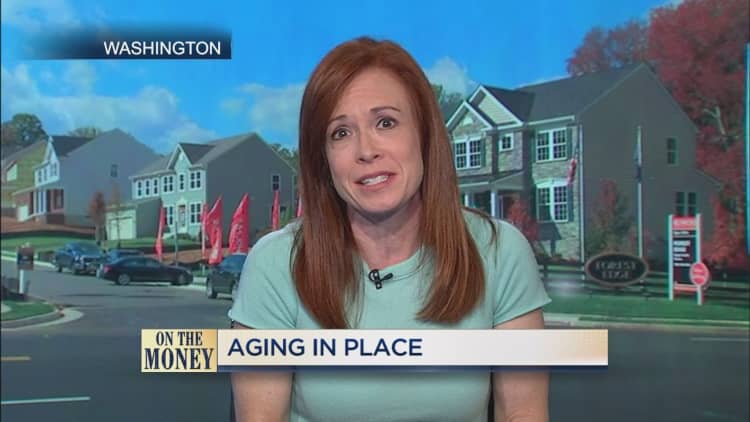
With more seniors than ever aging in place and choosing not to sell the family home, an estimated 1.6 million fewer properties are now available in a market already experiencing a critical shortage, according to Freddie Mac.
To put it in perspective, that is about the same number of new single-family and multifamily housing units built each year.
That stay-put trend is crashing into the rising demand for housing from the huge millennial generation: fewer homes for sale will continue to put upward pressure on already overheated home prices.
"We believe the additional demand for homeownership from seniors aging in place will increase the relative price of owning versus renting, making renting more attractive to younger generations," said Sam Khater, chief economist at Freddie Mac, who estimates that the current market needs about 2.5 million more homes to meet demand.
The reasons more seniors are choosing to stay in the homes where they raised their families are manifold.
"They love their homes, it's their chief investment, they love their neighborhoods and their communities, and they love the control they get in their own house," said 64 year-old Louis Tenenbaum, a housing advocate in Kensington, Maryland. "They decide when to get up, when to go to sleep, what to eat, who to have as visitors."
Tenenbaum is preparing to age in place himself. He is in the midst of building an elevator into his three-level home. He has also widened doorways, made a curbless shower and lowered his kitchen counters, should he ever be in a wheelchair. he notes that 63 percent of the $383 billion spent on remodeling each year is among people over 50 years of age, according to Harvard's Joint Center for Housing. The trouble is they don't always add features for aging in place.
"If we can shift the remodeling industry to be doing those types of things when they're already remodeling, then we really start to change the housing infrastructure and we create this place where people can enjoy living out their years in their home," Tenenbaum said.
That's great for homeowners, but not so great for young buyers hoping to move into larger suburban homes.
"There's a stalemate," said Jane Fairweather, a longtime real estate agent in Bethesda, Maryland. "We can't get enough housing for the couples who want to put their kids in good public school systems."
While some homeowners are choosing to age in place, others simply can't afford the high costs of moving. Today's housing market is incredibly pricey, and some can't afford to move into another home, even a smaller one. For others, the math just doesn't make moving that attractive.
"If they have to spend another million dollars to get one-quarter of the space, that house starts to look reasonable and the maintenance on it looks reasonable," Fairweather said.
The homeownership rate among millennials is about 8 percentage points lower than previous generations at their age, according to the Urban Institute. Much of that has to do with delayed marriage, high levels of student loan debt, and a shift toward more expensive, urban living. Still, as more millennials age into marriage and parenthood, their desires to become homeowners increases, and the lack of supply of affordable homes for sale sidelines them.
While the nation's homebuilders are focusing on so-called 55+ communities, some of these are expensive and not near urban locations. Older Americans want to be close to their children and grandchildren and active baby boomers want to be in walkable communities with activities nearby. For some, downsizing into these communities works well, but for an increasing number, staying in their homes longer now seems sweeter.



